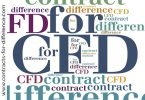Using CFDs to buy one stock and sell another in the same sector allows individuals to reduce market risk, creating the possibility of bigger profits on more adventurous trades.
Helen Castell considers the opportunities -:
In the midst of an M&A boom, equities start behaving differently. Takeover frenzy changes the rules, with share prices soaring for the mid-caps everyone’s salivating over the small fish that don’t look tasty and the mammoths they can’t digest.
Hedge funds have known this for years, and have made a mint exploiting the price shifts when companies get their hunting knives out. By zooming in on likely M&A deals, selling the predators and buying their targets, they profit on the price movements between two related stocks. But by taking a net position they protect themselves from overall market shifts – buying themselves the hedge that they’re named for.
So what’s stopping retail investors doing the same? The products are out there, the tracking systems are on your screens and you can now pairs trade at the click of a button – just like the big boys.
If you’re still scared of arbitrage, ask yourself the following questions: Are you making the M&A cycle work for you on both sides of the equation? And with analysts continuing to predict a big equity correction, what would happen to your holdings without a hedge?
Although it’s certainly sophisticated, pairs trading with contracts for difference (CFDs) is less intimidating than it sounds. It typically involves buying one stock and selling another in the same sector, but can equally be applied to indices, commodities or currencies.
An often-quoted example is a BP and Shell play. An investor who believed BP to be undervalued and Shell to be overvalued would long BP and short Shell in equal quantities. The hope is that if the market fell, Shell would fall further than BP. In a rising market, the hope is that BP would rise more than Shell.
An investor who bought a CFD for £10,000 worth of BP shares and sold a CFD for £10,000 worth of Shell shares would pay a typical margin of £2,000. If, when the two CFDs closed, BP’s share price had risen 10% but Shell’s had risen just 1%, it would give a profit of £1,000 on the long CFD and a loss of £100 on the short CFD, resulting in a net profit of £900.
If both stocks rose or fell the same amount, the investor would earn nothing but, as with CFDs in general, would still have to factor in an interest charge on the long CFD countered by a slightly smaller interest payment on the short CFD. This would result in a loss, but a much smaller one than if a simple shareholding slumped.
Advantages
‘The whole reason for pairs trading is that you try to remove market risk,’ says Andrew Gibson, an analyst. ‘If you’re long only, on a buy and hold basis, you really are buy-and-hope. But if the market falls where’s your protection?’
Pairs trading is what professional arbitragers do, notes Salim Sebbata, director of UK retail at E*TRADE Securities. ‘The first hedge funds aimed to be completely hedged, which means half the portfolio was long, half was short. And then in theory, should the market move, that portfolio would be immune to any changes.’
If done well, you can make money by picking shares where you think there has been an overvaluation and trade them against those that are undervalued, he adds.
As well as leveraging your investment, you can also leverage your market research, says James Daly at TD Waterhouse business development. ‘If you know about a particular sector then you’ve already thought about which stock is at a good price and which stock is at a low price. So instead of using that information just to choose which one you will buy, if you think one is overvalued at that time then you can do pairs trading to go against that. You can take advantage of all your research rather than just a portion of it.’
Given its relative complexity, pairs trading tends to attract only experienced traders. ‘You need to have learned what it means to sell a CFD short, which is quite a different animal to just buying long,’ says Sebbata. ‘It requires a different mindset – the expectation that the price will drop, and benefiting from that.’
However, investors who are currently using leveraged tools such as CFDs or spread bets should be most of the way there, argues Gibson. ‘They’ve probably already jumped through a few hoops just to open accounts, and in many ways it’s a lower-risk trading strategy than what they’ll have done already.’
The biggest downside of pairs trading is the same as for any hedged trading. ‘People forget that in reducing the risk you also reduce the potential rewards,’ notes Mike Estrey, head of research at a CFD provider.
You lose the opportunity of bull market gains and, because you pay margin on both sides of the trade, the money you make can sometimes be eliminated by trading costs, adds Gibson.
‘There’s also the risk that you get both sides of the pairs trade wrong,’ although this is unusual, says Estrey. ‘You have to be very precise about what you’re doing,’ warns Angus Campbell, head of UK sales at City Index. ‘Say you’re long Vodafone but short BT, what happens if BT gets bid for? Vodafone would go up, but nowhere near enough to cover the sort of losses you’re making on the BT side.’
Strategies
There are three main strategies investors can pairs trade with. Basic sector plays bet on one stock doing better than a direct rival, usually because of a fundamental shift in its business.
The retail sector currently looks ripe for this kind of trade. ‘It’s clear that retail spending appears to be slowing. And that’s one of the few sectors where there are falls in prices happening at the moment,’ says Estrey. ‘You’ve got to look for situations where there’s a possible profits warning and go short of that stock.’
More involved is a statistical arbitrage strategy, which relies on the quantitative tracking of stocks to look for inconsistencies in longer-term share-price patterns.
‘In this situation, BP might have outperformed Shell but you can’t see a reason why,’ says Gibson. ‘You run back-testing on it and you bet that over the short term they’ll converge or revert to the mean.’
‘We have screening tools on the webpage, so people can have a look around there and run fundamental filters across the indices or across the markets,’ says Sebbata. ‘And the great thing is that ten years ago you had to have very sophisticated and very expensive tools – now it’s all available online, for free.’
The third strategy, merger arbitrage – where traders long potential bid targets and short predators – is the man of the moment. With so much bid activity in the market, there’s probably a fair few merger arbitrage trades out there,’ says Gibson.
However, as well as having to be ahead of the game, the cross-border nature of many acquisitions can make a pairs trade more complicated. If an investor were interested in pairs trading Akzo Nobel with its rumoured target ICI, ‘you’d have to go long ICI in the UK and short Akzo in euros, on the Dutch stock exchange.’
And beware, ‘these deals can fall apart,’ adds Sebbata. ‘So people need to use a stop loss so they don’t get caught . and they start losing on both legs of the pairs trade.’
Beyond Equities
As long as the relationship between the two underlyings is strong enough, pairs are not limited to equities. ‘You can pairs trade on anything, as long as it’s a legitimate pair and there’s a real correlation,’ says Gibson. That said, ‘the relationship can’t ever be a perfect relationship or there’s no money to be made.’
The relationship could even be inverse, notes Sebbata. In the mid- to late 1990s a common strategy in the US was to trade biotechnology against semi-conductors, exploiting the negative correlation between the two.
Hedge funds often trade individual stocks against an index, shorting the index and longing stocks that they bet will outperform it, and retail investors can do this too, though whether this is a true pair or not is open to interpretation.
‘It’s a valid strategy,’ argues Sebbata, especially when trading stocks against sector indices. ‘I find it a bit more difficult with a wider index such as the FTSE.’
A neater pair can be found with two indices. ‘At the moment, the Dow Jones is up 9% on the year, the FTSE’s up 6.4%,’ notes Gibson. ‘That would be a classic pairs trade if you felt the FTSE was due to play catch-up with the Dow. You could go long the FTSE and short the Dow.
Commodity CFDs can also be traded in an interesting pair. ‘You might think gold will outperform silver,’ says Gibson. ‘Bearing in mind that a lot of commodities are partly being driven by sentiment towards China, you might be worried that at any time the Chinese bubble could go pop, so you might go long gold and short silver.’
The correlation between commodities is often not as close, though, so research carefully before making any plays, he adds.
The best conditions to pairs trade in are range-bound markets, says Gibson. ‘If you’ve got a market going in one direction then you’re not going to make any money pairs trading, because BP and Shell will go up similar amounts. Whereas when you’ve got a market that is not as clearly trending, there’s going to be more room for relative valuation.’
If you’re mainly looking for a hedge, pairs trades can protect you from high volatility, which can also throw up some interesting movements, says Estrey. ‘If a market falls heavily, often the whole market will fall, but different shares will fall different amounts.’
Pairs trades vary in size and tenor as widely as with any investment, but around 90% fall within the 5-20-day range, says Estrey.
Statistical arbitrage trades are typically short-term. If you notice that one stock has spiked in the past week, a sector rival hasn’t joined it, and you’re looking for a 2% correction on a relative basis, you might hold the trade for no more than four days, Gibson says.
With merger arbitrage trades you may need to hold your position for some time, says Sebbata. ‘If you look at the current discussion about ABN Amro and all its suitors, you might need some breath to play that trade.’
It’s important to remember, though, that long CFDs cost more the longer you hold them, notes Gibson. And, as with any trading strategy, ‘if it’s not working, you’ve got to ask questions – you can’t just be hanging around indefinitely.’
Brought to you in association with MoneyAm Shares Magazine







